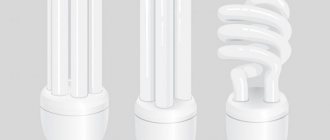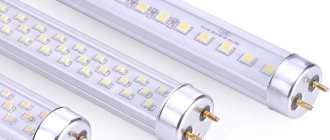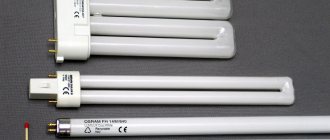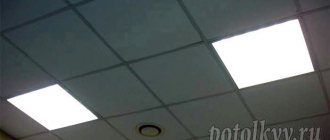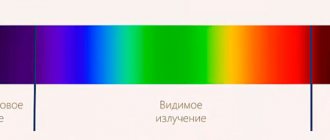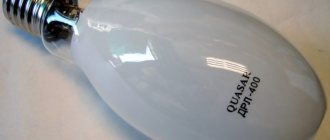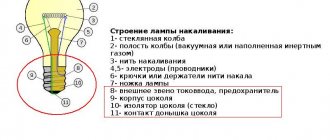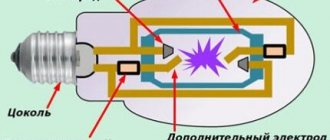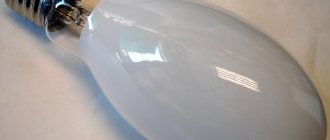This year, the garbage reform began to take effect on a practical level. This stage of its implementation coincided with the coronavirus pandemic, which made it mandatory to use recirculators with bactericidal lamps in cafes, restaurants, educational institutions and many other public places. As you know, these lamps contain mercury, and as a result, problems associated with their disposal have to be solved. The recycling procedure seems simple at first glance; in fact, it is regulated by many laws and other regulations.
Why do you need to organize waste disposal? For at least two main reasons. Firstly, to prevent environmental pollution. Secondly, for the recycling of a number of materials.
In our country, waste disposal issues are regulated by Federal Law No. 89-FZ “On Production and Consumption Waste”. According to this law, waste is divided into five hazard classes:
- Class I - extremely dangerous,
- Class II - highly dangerous,
- Class III - moderately dangerous,
- Class IV - low-hazard waste,
- Class V - practically harmless.
Organizations that work with waste of hazard classes I–IV need to have a special license for this type of activity. Class I–III waste is accepted only at special points and containers.
Class IV waste can be accepted as part of separate collection of household waste; it must be buried only in specially equipped landfills. But if we are talking about industrial waste of class IV hazard, then they cannot be thrown into containers for household waste. Finally, Class V waste can be disposed of in regular landfills.
The degree of danger of a particular product category, including lamps, is determined according to the Federal Waste Classification Catalog (FWCC).
Almost all gas-discharge lamps - fluorescent, sodium, metal halide, etc., including the now extremely relevant bactericidal lamps, contain mercury. The only exceptions are a few models of sodium lamps, as well as neon lamps for decorative lighting. Light sources that contain mercury in varying quantities are collectively called mercury-containing lamps.
In terms of their danger, mercury-containing lamps as waste belong to class I. It is generally accepted that the advantages of LED lamps, in addition to efficiency and durability, include the absence of the need for special disposal measures. In fact, this is not entirely true; LED lamps are classified as hazard class IV. That is, in some cases, disposal measures may be required, which we will talk about a little later.
The need to recycle fluorescent lamps
The new light source has many advantages:
- their energy exceeds incandescent lamps by 4-5 times;
- soft light of several shades;
- long service life.
Despite their advantages, lamps have significant disadvantages. When working, they emit ultraviolet light. Doctors have long proven the harmfulness of these substances. They cause skin diseases such as dermatitis, eczema, psoriasis.
It is easy to notice that fluorescent lamps constantly flicker, which causes eye fatigue. This is especially harmful to children’s vision; it can significantly reduce it.
The composition of the lamps contains harmful impurities, so they must be disposed of.
How to extend service life
Some secrets to extending the life of fluorescent lamps:
- first of all, observe the mode of use, turn the lamp on and off for a long period of time, but not more than 5 times a day;
- use them within acceptable temperature limits;
- select the correct lighting devices by power in accordance with their purpose, since this value required for lighting apartments in houses differs significantly from the models used in production;
- you can tin the contacts to prevent them from oxidizing under the influence of ambient temperature and humidity;
- It is worth soldering all the wires twisted in the starter, which will increase the time of their use.
Dangerous chemical composition
The lamp device operates on the basis of oxides of strontium, barium and gas, which are mixed with mercury. To make the lamp shine, a phosphor substance is applied inside. The brightness of the source depends on its thickness.
The lamp tubes are equipped with 3-4 g of mercury. Containing a hazardous component carries a health risk if damaged.
Important! Mercury belongs to class 1 hazardous substances.
The spill poses a major threat to the environment. Mercury accumulates in the soil, permeates groundwater, flows from it into water bodies, and infects fish. Therefore, it becomes obvious that fluorescent lamps must be recycled.
How to prevent emergency situations due to mechanical damage to mercury-containing lamps?
When depressurizing several mercury-containing lamps, you need to:
- evacuate people and animals from the premises;
- localize the spread of metal;
- call the Ministry of Emergency Situations;
- close access to the premises and appoint a person on duty to guard the entrance to the contaminated area.
If the bulb of 1 lamp is damaged, mercury can be removed (demercurization) by the company's employees. Lamp fragments and accessories used during cleaning can be stored for 1-5 days. The collected metal must be handed over to the authorized unit of the Ministry of Emergency Situations.
How to carry out demercurization:
- Wear a respirator, rubber gloves, protective suit and goggles.
- Prepare a sealed container and means for removing mercury: brown solution of potassium permanganate (0.2% crystals, 5 ml of hydrochloric acid per 1 l), mono- or dichloramine (5%), sodium polysulfide (25-50%), hydrochloric acid ( 5-10%) or other substances listed in the guidelines for demercurization.
- Collect drops of metal using a vacuum pump or a scoop covered with amalgam. When clearing an area, move from the periphery to the center. Place the collected metal in an airtight container.
- Treat the mercury spill site with a reagent.
- Pack the tools and remaining flasks in a sealed plastic bag.
- After completing the work, remove and pack disposable protective equipment, and give the special suit for processing. Rinse your mouth with a pink solution of potassium permanganate.
To remove heavy metals, an enterprise can use a ready-made demercurization kit. It includes gloves, a respirator, shoe covers, a spray bottle, wet wipes, a tray, film, a scoop, detergent, chemical reagents, instructions, and a plastic bag or container.
Lamps containing heavy metals
Heavy metals include chemical elements that are very toxic. When they enter a living organism, they cause damaging damage. Exceeding the concentration of substances causes skin hyperpigmentation, cancer, loss of vision, liver and kidney diseases.
LED equipment
Diode-powered technology is considered the safest of all existing ones. Recycling LED lamps does not require strict regulations. They can be disposed of as solid waste.
Devices equipped with red LEDs, such as those used in holiday lights or car brake lights, contain high levels of lead and arsenic. Therefore, their destruction differs from conventional diode devices.
Laptops, televisions, and computers also contain a small number of heavy metals.
Accumulation lamps
A conventional incandescent light bulb runs on a tungsten filament. This is a refractory material that heats up at temperatures above 3000˚C.
In addition, it contains tin for soldering contacts, galvanized metal for the cartridge and copper. Today, incandescent lamps are in first place in terms of safety.
Halogen lighting fixtures
Halogen-type devices have excellent luminous qualities. During their service life, they do not change their brightness, which contributes to savings.
The devices contain chromium, bromine and fluorine. They are installed in floodlights and street lamps. The brightness of the illumination depends on the tungsten filament, which is reflected by a metal reflector.
Reference. Halogen floodlights are used by naval and military units.
Among the equipment, metal halide devices are distinguished. They belong to the gas-discharge group. Contains volatile mercury and particles of other metals.
Destruction technology
Fluorescent lamps are one of the dangerous devices. They should not be thrown into a trash bin or container. Only recycling using technology will protect against mercury vapor poisoning.
There are two disposal methods. The method used previously was to wash all components with water. During further processing, the chemical components were separated from it and used to produce a new material.
Improvements in technology have opened up new solutions for the disposal of waste hazardous waste:
- lamps are crushed;
- harmful substances are removed from the mixture using high pressure air;
- the remaining composition is brought to a boil in special containers;
- Mercury is separated from the cooled liquid for secondary use.
It is strictly prohibited to carry out such actions on your own.
Important! If only 1 device is damaged, a room with a volume of up to 5000 m3 will be contaminated.
How and where to dispose of halogen lighting fixtures
Incandescent lamps include halogen lighting devices, the gas mixture of which includes halogens. Such used devices are not hazardous to human health or the environment. Therefore, recycling of halogen lamps usually occurs in a simple way - through garbage cans. Also, containers for leftover materials can be used to dispose of used lighting fixtures. However, such glass bulbs are not thrown into containers intended for bottle glass, because the structure of their material is different from the structure of glass bottles.
Disposal of energy-saving lamps should be carried out by specialists who will neutralize the devices without negative consequences for the environment and human health. It is important that every person understands the importance of this process, especially if this person is the owner of an enterprise where such waste is generated in huge quantities.
If the lamp is damaged
The high efficiency of an energy-saving lamp does not guarantee its continued integrity. It's safe as long as it's whole. If the device breaks, there is a risk of mercury contamination. Urgent measures need to be taken.
Precautionary measures
Mercury vapor from lamps is more dangerous than the substance itself. They immediately enter the respiratory system and affect the body. The following actions are required:
- Ventilate the room for 2 hours with the windows open.
- Leave the premises with your pets.
Do not visit the contaminated area until it has completely evaporated.
Features of recycling
A damaged device cannot be thrown into the trash and must be disposed of. Actions must be carried out in compliance with safety rules:
- wear a mask and gloves;
- collect fragments and parts;
- remove mercury with a wet sponge;
- put in a bag and seal tightly;
- Treat surfaces with potassium permanganate;
- disinfect the soles of shoes with a chlorine solution;
- Pack the items used for cleaning in a sealed bag;
- take the packages to a hazardous waste container.
Forbidden:
- use a vacuum cleaner when cleaning;
- dispose through the toilet;
- work without a mask and gloves.
In the absence of special tanks, packaged packages are handed over to collection points.
Conditions
There are several options for recycling hazardous lighting fixtures, but not many are used. The most popular option.
- First, the recyclable lighting fixtures are combined.
- A special sealed container is used to collect their wounds.
- The “garbage” is placed in an oven, where it is heated to 400 degrees, at which temperature the hazardous metal transforms into a gaseous state. The resulting gas is removed through the hood.
You might be interested in Using programs to calculate lighting
Conditions for disposal
Note! Catchers are installed on special hoods that disinfect the steam removed from the furnace
It is important that all safety measures are observed during the work process.
It is important that all safety measures are observed during the work process.
Rules for transportation and disposal of fluorescent lamps
Fluorescent lamps should be transported in the same way as dangerous goods. Transportation rules are indicated in ADR. Transportation is carried out in a special container, which contains a danger sign and markings.
The speed of transport does not exceed 60 km/h. The route is laid at a distance from residential buildings. Before transportation, an agreement is drawn up with the organization providing such services. It should contain:
- Name of the cargo.
- The name of the organization that transports and processes waste.
- Duties of the parties.
- Price for transportation of mercury equipment.
- Transportation procedure.
- Unforeseen circumstances that may arise during transportation.
The car must be equipped with an alarm in case of mercury vapor.
Attention! All work is performed by qualified specialists licensed to transport dangerous goods.
If mercury-containing equipment is damaged at an enterprise, a responsible person is appointed who is responsible for temporary storage. Submit an application for demercurization of the building.
Store hazardous waste in a closed area where unauthorized persons are prohibited from entering. Self-disposal of damaged fluorescent lamps and other devices is not allowed. Special organizations, under a contract, transport them for recycling.
Security measures
Organizations and enterprises wishing to obtain a license to process such waste are required to have:
- Special facilities for the conservation and neutralization of hazardous components and components.
- Equipment and specialized installations for working with each component of the device.
- Specially equipped transport with appropriate markings.
- There must be trained employees with the necessary qualifications. Certificates of qualification are required.
Disposal process
Additional safety measures are internal mandatory rules of behavior and work at such an enterprise. Having personal protective equipment is a must. The enterprise must monitor the quality and condition of protective suits and work equipment in general.
Improper storage of lamps
Proper recycling of mercury-filled lamps is simply a necessary condition for their normal operation. A device of this type can be quite life-threatening if the garbage is not “thrown away” correctly. It is imperative to return the device for recycling, where all hazardous substances will be isolated.
Disposal cost
Services for the disposal of mercury-containing waste are provided on a commercial basis. The renting party pays.
Table No. 1
| Name | Quantity | Price for 1 piece. (rub.) |
| Fluorescent direct lamp | 250-300 pcs. | 15 |
| DRL lamp | 1 PC. | 18-20 |
| Solarium lamp | 1 PC. | 30-35 |
| Broken mercury lamps (scrap) | 1 PC. | 400 |
Recycling prices may vary by item.
Disposal outside developed settlements
In small towns and villages, the issue of delivery and disposal is more complicated. There are no such points organized here yet, so you should contact the existing organizations:
- circuit;
- village councils;
- Ministry of Emergency Situations.
They must create appropriate points for the collection of hazardous waste.
Contacting the service company
According to the legislation of the Russian Federation, service companies are required to organize a place for receiving and storing waste of hazard class 1. Reception from individuals is free, legal entities and enterprises pay for services according to the price list.
In case of refusal to accept hazardous raw materials or storage violations, the service company is responsible.
Administration of the locality
Residents of small settlements most often do not know where to donate energy-saving light bulbs or where to look for waste collection. They need to contact the district administration regarding disposal issues.
A place for temporary storage of hazardous waste must be organized. The room is equipped with special containers for storage. According to an agreement concluded with regional services, garbage is removed for disposal.
Construction stores
In places where there is absolutely nowhere to hand over fluorescent equipment, you should contact hardware stores. Well-known retail chains organize the collection and disposal of used mercury-containing lamps.
Here you can find containers with markings and the name of the scrap.
INSTRUCTIONS FOR HANDLING WASTE 1 HAZARD CLASS
General provisions
This Instruction determines the procedure for handling waste of hazard class 1 “Mercury lamps, mercury-quartz, fluorescent, which have lost their consumer properties.” The instructions have been developed in accordance with the following legislative and regulatory acts of the Russian Federation:
- Law of the Russian Federation of January 10, 2002 No. 7-FZ “On Environmental Protection”;
- Law of the Russian Federation dated June 24, 1998 No. 89-FZ “On production and consumption waste”;
- Law of the Russian Federation of March 30, 1999 No. 52-FZ “On the sanitary and epidemiological welfare of the population”;
- Decree of the Government of the Russian Federation dated September 3, 2010. No. 681 “On approval of the Rules for the management of production and consumption waste in terms of lighting devices, electric lamps, improper collection, accumulation, use, neutralization, transportation and disposal of which may cause harm to life, health of citizens, harm to animals, plants and the environment” ;
- Order of the Ministry of Natural Resources of the Russian Federation No. 445 dated July 18, 2014 “On approval of the Federal Classification Catalog of Waste”;
- Order of the Ministry of Natural Resources of the Russian Federation dated June 15, 2001. No. 511 “On approval of the Criteria for classifying hazardous waste as a hazard class for the natural environment”;
- SanPiN 2.1.7.1322-03 “Hygienic requirements for the disposal and disposal of production and consumption waste.”
General information about waste
2.1. Mercury, mercury-quartz, fluorescent lamps (hereinafter referred to as mercury-containing lamps) are gas-discharge light sources, the principle of which is as follows: under the influence of an electric field in mercury vapor pumped into a sealed glass tube, an electrical discharge occurs, accompanied by ultraviolet radiation.
2.2. A phosphor applied to the inner surface converts ultraviolet radiation into visible light.
2.3. In accordance with the Order of the Ministry of Natural Resources of the Russian Federation dated July 18, 2014 No. 445 “On approval of the Federal Classification Catalog of Wastes,” the waste “Mercury lamps, mercury-quartz, luminescent, which have lost their consumer properties” has code 47110101521 and belongs to waste of hazard class 1 - extremely hazardous waste.
2.4. The degree of harmful impact of hazard class 1 waste on the environment is very high. When they impact the environment, the ecological system is irreversibly disrupted. There is no recovery period.
2.5. The physical state of waste is a finished product that has lost its consumer properties.
2.6. Hazardous properties of waste - toxicity.
Component composition of waste in accordance with its passport:
- silicon dioxide - 70.5%;
- mercury - 2.0%;
- metal - 27.5%.
2.7. Uncontrolled handling of failed mercury-containing products (lamps, thermometers, instruments, etc.) leads to contamination of the environment (industrial, office, public and residential premises) with mercury or its vapors to concentrations that pose a direct threat to human health.
Terms and Definitions
3.1. Waste mercury-containing lamps - mercury-containing waste, which represents lighting devices and electric lamps with mercury filling and a mercury content of at least 0.01 percent that are decommissioned and subject to disposal.
3.2. Consumers of mercury-containing lamps are legal entities or individual entrepreneurs who do not have a license to carry out activities for the collection, use, neutralization, transportation, and disposal of waste of I-IV hazard classes.
3.3. Accumulation is the storage by consumers of mercury-containing lamps, with the exception of individuals, of the amount of waste mercury-containing lamps permitted in accordance with the established procedure.
3.4. Specialized organizations are legal entities and individual entrepreneurs that collect, use, neutralize, transport and dispose of waste mercury-containing lamps and have licenses to carry out activities for the collection, use, neutralization, transportation, and disposal of waste of I-IV hazard classes.
3.5. The breaking of a mercury-containing lamp is an emergency. Under no circumstances is it recommended to store broken mercury lamps in the same container with whole used lamps. For broken lamps, a report is drawn up, it indicates the type of broken lamps, their quantity, and an entry is made in the register of used mercury-containing lamps.
3.6. An emergency is a situation in a certain territory that has arisen as a result of an accident, a dangerous natural phenomenon, a catastrophe, a natural or other disaster that may result or has resulted in human casualties, damage to human health or the environment, significant material losses and disruption of people’s living conditions.
3.7. An emergency zone is a territory where an emergency situation has occurred.
3.8. Elimination of an emergency situation - rescue and other urgent work carried out in the event of an emergency situation and aimed at saving lives and preserving the health of people, reducing the amount of damage to the environment and material losses, as well as localizing the emergency zone, stopping the action of the dangers characteristic of it factors.
3.9. Waste demercurization is the neutralization of waste, which consists in extracting the mercury or its compounds contained in them.
3.10. Demercurization of premises - neutralization of premises (their surface or volume) contaminated with metallic mercury, its vapors or salts. 3.11. Demercurizers are substances that interact chemically with metallic mercury or its compounds, resulting in the formation of stable and low-toxic compounds.
Hazardous properties of waste components
4.1. A hazardous component of the waste “Mercury lamps, mercury-quartz lamps, fluorescent lamps that have lost their consumer properties” (hereinafter referred to as spent mercury-containing lamps) is mercury, which has a toxic effect on humans and the environment. This substance is in lamps in a state capable of active air, water and physicochemical migration.
4.2. Mercury has a negative effect on the human nervous system, causing emotional instability, increased fatigue, memory loss, and sleep disturbances. Pain in the extremities (mercury polyneuritis) is usually observed. In addition, mercury has a toxic effect on the endocrine glands, the visual analyzer, the cardiovascular system, and the digestive organs.
4.3. With the mechanical destruction of one mercury lamp containing 20 mg of mercury vapor, 5000 m3 of air becomes unsuitable for breathing. Even in concentrations hundreds and thousands of times higher than the maximum permissible concentration, mercury vapor has no color, taste or smell, does not have an immediate irritating effect on the respiratory system, vision, skin, mucous membranes, etc., their presence in the air can be detected only with the help of special equipment. For this reason, personnel working in mercury-poisoned areas are unaware of it for a long time, even when symptoms of chronic mercury poisoning appear, often until signs of serious poisoning become obvious or pronounced.
4.4. Depending on the amount of mercury entering the body, acute and chronic poisoning are distinguished. Acute poisoning by mercury vapor occurs when it quickly enters the body in significant quantities. Chronic poisoning occurs with prolonged contact with small concentrations of mercury vapor. Acute mercury vapor poisoning occurs several hours after the onset of poisoning. Symptoms of acute poisoning: general weakness, lack of appetite, headache, pain when swallowing, metallic taste in the mouth, salivation, swelling and bleeding of the gums, nausea and vomiting. Often there is pneumonia, catarrh of the upper respiratory tract, chest pain, cough and shortness of breath, often severe chills. Body temperature rises to 38-40°C. In the most severe cases, the victim dies within a few days.
4.5. Chronic mercury poisoning (mercurialism) leads to disruption of the nervous system and is characterized by the presence of asthenovegetative syndrome with distinct mercury tremor (trembling of the hands, tongue, eyelids, even legs and the whole body), unstable pulse, tachycardia, excited state, mental disorders, gingivitis. Apathy, emotional instability (mercurial neurasthenia), headaches, dizziness, insomnia develop, a state of increased mental excitability occurs (mercurial erethism), and memory is impaired.
4.6. Inhalation of mercury vapor with strong exposure is accompanied by symptoms of acute bronchitis, bronchiolitis and pneumonia. Many symptoms of mercury vapor poisoning disappear when exposure is stopped and appropriate measures are taken, but complete elimination of mental disorders is impossible.
4.7. The noted syndromes and symptoms are observed when exposed to mercury vapor at concentrations in the air of more than 0.1 mg/m3. But mental disorders can also occur at lower concentrations.
4.8. Micromercurialism develops with prolonged exposure to low concentrations of mercury vapor in the air - no more than hundredths of mg/m3. It manifests itself depending on the body and the state of the nervous system. Typically, its manifestations are initially expressed in decreased performance, fatigue, and increased excitability. Then these phenomena intensify, memory impairment occurs, anxiety and self-doubt, irritability and headaches appear.
4.9. Diagnosing mercury poisoning is very difficult. They are hidden under the guise of diseases of the respiratory system or nervous system.
Waste generation and collection
5.1. Persons at least 18 years of age who have undergone training labor protection are allowed to work on the replacement and collection of used mercury-containing lamps .
5.2. Personnel working with waste mercury-containing lamps must have a complete understanding of the effect of mercury and its compounds on the human body and the environment.
5.3. Trained and instructed employees bear full responsibility for violation of the requirements of this instruction in accordance with current legislation.
5.4. Sources of waste “Mercury lamps, mercury-quartz lamps, fluorescent lamps that have lost their consumer properties” are ceiling and table lamps used for lighting industrial and domestic premises.
5.5. A prerequisite for replacement, temporary storage, transportation of used mercury-containing lamps, as well as transportation, storage and installation of new mercury-containing lamps is to maintain their integrity and tightness.
5.6. In order to prevent accidental mechanical destruction of mercury-containing lamps, they should be handled with great care.
5.7. Any actions (throwing, hitting, disassembling, etc.) that could lead to mechanical destruction of mercury-containing lamps, as well as storing used or defective mercury-containing lamps in containers with solid household waste are prohibited.
5.8. After removing a used mercury-containing lamp from a luminaire, each used mercury-containing lamp must be packaged in individual factory containers made of corrugated cardboard.
5.9. In the absence of individual corrugated cardboard packaging, each used mercury-containing lamp of any type (brand) must be carefully packaged (wrapped) in paper or thin soft cardboard, protecting the lamps from mutual contact and accidental mechanical damage.
5.10. Used mercury-containing lamps packed in corrugated cardboard or paper are transferred to a temporary accumulation site, where their performance is immediately checked. After the lamps are confirmed to be inoperable, they are recognized as waste, carefully packaged again and moved to a temporary storage area.
5.11. New mercury-containing lamps for replacement in lamps are issued only after the transfer of used mercury-containing lamps to the temporary accumulation site. Mechanical destruction of mercury-containing lamps as a result of careless handling is an emergency situation in which emergency measures are taken in accordance with Section 9 of these instructions. Parts of broken lamps and the room in which they were broken must be subjected to demercurization.
Conditions for temporary storage and accumulation of waste
6.1. Temporary accumulation of used mercury-containing lamps is permitted for no more than 11 months in a storage area specially designated for this purpose in a room located separately from production and domestic premises.
6.2. The room must be well ventilated, protected from chemically aggressive substances, precipitation, surface and ground water.
6.3. Warehouse doors must be securely locked and marked “No Trespassing.” It is mandatory to have a plate with the details of the person responsible for the accumulation of waste in the warehouse, for example, “Responsible for the warehouse – full name”.
6.4. Storage of used mercury-containing lamps should be carried out in undamaged containers from new mercury-containing lamps or in other containers that ensure their safety during storage, handling and transportation.
6.5. At the waste accumulation site there must be an inscription or a sign “Waste of hazard class 1. Waste mercury-containing lamps."
Prohibited:
- use of aluminum as a structural material;
- temporary storage and accumulation of used mercury-containing lamps in any industrial or domestic premises where enterprise personnel may work, rest or be present;
- storing and eating food, smoking in places where waste mercury-containing lamps are temporarily accumulated.
6.6. During the collection process, lamps are sorted by diameter and length, neatly and tightly packed into containers, boxes or crates (shipping containers). There should be a separate container, box or box for each type of lamp. It is mandatory to check the correctness and integrity of the internal packaging of the lamps, and correct defects if necessary.
6.7. The maximum weight of cardboard and plywood containers when filled should not exceed 15 kg, metal containers - 30 kg.
6.8. In order to ensure the necessary strength and tightness of the packaging, cardboard boxes must be covered with adhesive tape at least 50 mm wide along all seams, including vertical ones. The ends of the adhesive tape must extend to the walls of the cardboard box adjacent to the sealed seam by at least 50 mm.
6.9. Handling signs “Caution! Fragile! “Top”, on the cardboard boxes there is additionally a sign “Keep away from moisture”, and also a label (or inscription) of any size is pasted on it, which indicates the type (brand) of lamps, their length, diameter and the number of lamps packed in this box. Stickers with these inscriptions are allowed. It is prohibited to place other types of cargo on containers (boxes, crates) with lamps.
6.10. In a container (box, crate) filled with used mercury-containing lamps (protected by internal packaging), voids and free movement of lamps are not allowed. When filling a container, the gaps between adjacent lamps, as well as between the lamps and the walls of the container, are sealed with means of shock absorption and fastening (paper, newspapers, plastic film, etc., except for shavings).
6.11. The top of the cardboard box is closed, the last seam is sealed with adhesive tape. The metal box is locked.
6.12. As waste accumulates to the established norm (but not more than 6 months), used mercury-containing lamps are transferred for demercurization to a specialized enterprise in accordance with the concluded agreement.
6.13. If there are insufficient spent mercury-containing lamps to fill the container (box, drawer), all voids are tightly filled with the above soft shock-absorbing agents.
Prohibited:
- accumulation of used mercury-containing lamps in places of temporary accumulation in excess of the established standard;
- storage of used mercury-containing lamps in places of temporary accumulation for more than 6 months.
6.14. Due to the fact that broken mercury-containing lamps contaminate the external surfaces of undamaged lamps, personnel clothing and places of temporary accumulation of used mercury-containing lamps, their joint storage and packaging in the same containers with intact lamps is not allowed.
6.15. Parts of broken mercury-containing lamps are accepted at the temporary waste accumulation site only packed in durable sealed containers (strong sealed plastic bags).
6.16. Mercury collected during a spill is taken to the temporary waste accumulation site only in tightly closed thick-walled glass jars, packed in sealed plastic bags.
6.17. Devices, materials, special clothing, and personal protective equipment used during demercurization work are accepted at the temporary storage site placed in a durable sealed container or in a bag containing a demercurization kit.
6.18. Parts of broken mercury-containing lamps packed in plastic bags, mercury in a tightly closed glass jar, a bag with materials and devices used during demercurization work are tightly placed in a sealed container made of impact-resistant material, sealed with shock-absorbing means and secured in a transport container. The impact-resistant container is locked.
6.19. Storage of broken mercury-containing lamps, collected mercury, materials and devices used during demercurization work at a temporary waste accumulation site is permitted for no more than 5 working days, during which they must be transferred for demercurization to a specialized enterprise.
Prohibited:
- storage in a temporary storage warehouse of broken waste mercury-containing lamps or mercury without sealed containers;
- storage of broken used mercury-containing lamps or mercury in impact-resistant sealed containers in a temporary waste storage warehouse for more than 5 working days.
Accounting for waste generation and movement
7.1. Accounting for the formation and movement of spent mercury-containing lamps is kept in a journal, where the generation of waste is obligatorily noted and its transfer to a specialized enterprise for demercurization. The pages of the magazine should be numbered and laced.
7.2. When transferring used mercury-containing lamps from a temporary waste storage warehouse to a specialized enterprise for demercurization, a record of the transfer of waste must be made in the logbook for recording the formation and movement of used mercury-containing lamps, indicating the date of transfer.
7.3. The original of the act (certificate) of acceptance and transfer of used mercury-containing lamps is transferred to the accounting department, a copy of it is necessarily transferred to the chemical engineer of the enterprise.
Transfer of waste to specialized enterprises
8.1. The transfer of used mercury-containing lamps for neutralization (demercurization) is carried out in accordance with an agreement concluded with a specialized enterprise licensed to collect, use, neutralize, and transport hazardous waste.
Prohibited:
- destruction, disposal into a container with solid household waste or transfer of used mercury-containing lamps subject to demercurization to individuals or legal entities that do not have a license to collect, use, neutralize, transport, dispose of hazardous waste;
- placement of spent mercury-containing lamps in landfills and solid waste dumps.
8.2. Before loading used mercury-containing lamps into a vehicle, check the correctness, integrity and compliance of their transport packaging with the requirements listed in Section 6 of these instructions. If necessary, correct deficiencies, and only then begin loading work.
8.3. When loading waste mercury-containing lamps, it is necessary to take into account meteorological conditions:
- It is prohibited to load waste mercury-containing lamps during rain or thunderstorms;
- When there is ice, loading areas should be sprinkled with sand.
8.4. Work on loading waste mercury-containing lamps must be carried out in the presence of a responsible person.
8.5. Crowds of people are not allowed in areas designated for loading waste mercury-containing lamps.
Prohibited:
- throw, hit, turn over packages (boxes, crates) with waste mercury-containing lamps upside down or on their sides;
- damage in any way the transport containers in which waste mercury-containing lamps are packaged;
- place other types of cargo on packages (boxes, crates) containing waste mercury-containing lamps;
- smoke when loading waste mercury-containing lamps.
Measures to eliminate emergency (emergency) situations
9.1. When handling used mercury-containing lamps, an emergency (emergency) situation is understood as the mechanical destruction of mercury-containing lamps without spillage or with spillage of mercury.
9.2. The content of emergency response measures depends on the degree of mercury contamination in the premises. It is mandatory to call specialists from the emergency rescue service of the Ministry of Emergency Situations of Russia by calling “01” (“112” - cellular operators) in case of mechanical destruction of mercury-containing lamps.
9.3. If there is mechanical destruction of no more than 1 mercury-containing lamp and the enterprise has a demercurization kit/kit for eliminating the consequences of an emergency, it is possible to carry out preparatory work to demercurize the premises and eliminate the emergency.
Prohibited:
- carry out work to eliminate the consequences of an emergency situation in the event of mechanical destruction of a mercury-containing lamp by the enterprise personnel in the absence of a demercurization kit/kit.
9.4. Persons at least 18 years of age who have undergone a medical examination, have no medical contraindications and are familiar with the instructions for working with the demercurization kit are allowed to carry out demercurization work. They must be provided with special clothing, personal protective equipment for the respiratory system, legs, hands and eyes in accordance with clause 15.3 of the Sanitary Rules when working with mercury, its compounds and devices with mercury filling dated 04.04.88 No. 4607-88.
9.5. The demercurization kit/kit includes all materials and equipment necessary for demercurization work:
- personal protective equipment (respirator, gloves, shoe covers);
- devices for collecting spilled mercury and parts of broken lamps (syringe, copper and hair brushes, wet wipes, tray, scoop);
- chemical demercurizers, detergent, etc.
9.6. All of the above is packed in a special bag (25x30cm).
9.7. The use of a demercurization kit makes it possible to reliably eliminate small mercury contaminations (8-10 maximum permissible concentrations) arising from a single mechanical destruction of a fluorescent lamp or medical thermometer. The demercurization kit must be kept by the person responsible for the environmental activities of the organization (or the person replacing him).
Elimination of the consequences of an emergency situation in the event of mechanical destruction of no more than 1 mercury-containing lamp
10.1. Elimination of the consequences of an emergency situation in the event of mechanical destruction of one mercury-containing lamp and minimal spillage of mercury (no more than the amount contained in one medical thermometer) consists of carrying out two sequential measures:
- localization of the source of infection;
- eliminating the source of infection.
10.2. The goal of the first activity is to prevent further spread of mercury pollution, and the result of the second activity is to minimize the damage from the emergency.
10.3. Localization of the source of contamination is carried out by limiting the entry of people into the contamination zone, which helps prevent the movement of mercury to clean areas of the room, while it is necessary:
- remove personnel from the premises as quickly as possible;
- turn off all electrical appliances, if possible, reduce the room temperature to at least 15°C (the lower the temperature, the less mercury evaporates);
- close the door to the room, leaving the window open, carefully seal the door to the room with adhesive tape;
- intensively ventilate the room for 1.5-2 hours;
- After this, you can lightly close the windows and begin to eliminate the source of infection.
10.4. Elimination of the source of infection is carried out using a demercurization kit/kit and involves the following procedures:
- mechanical collection of lamp fragments and/or spilled metallic mercury;
- demercurization itself - treating the premises with chemically active substances or their solutions (demercurizers);
- wet cleaning.
Prohibited:
- presence at a mercury-contaminated facility of persons not associated with the performance of demercurization work and not provided with personal protective equipment;
- at a mercury-contaminated site, eat, drink, smoke, unfasten and remove personal protective equipment;
- drink alcohol before and during demercurization work;
10.5. Before starting to eliminate the source of infection, it is necessary to open the demercurization kit/kit and carefully study the instructions for carrying out demercurization with its help.
10.6. Put on personal protective equipment (working clothes, safety shoes, shoe covers, respirator, protective gloves, goggles) and only then begin to collect fragments of a broken mercury-containing lamp, spilled mercury and demercurization of the room.
10.7. Collection of fragments of a broken mercury-containing lamp or spilled mercury is carried out using the devices included in the demercurization kit (syringe, copper and hair brushes, wet wipes, tray, scoop) from the periphery of the contaminated area to its center.
10.8. It is unacceptable to limit yourself to inspecting only visible and accessible areas.
Prohibited:
- create a draft before the spilled mercury has been collected, otherwise mercury balls will scatter throughout the room;
- sweep up spilled mercury with a broom: hard rods will crush the balls into fine mercury dust, which will scatter throughout the entire room;
- collect mercury using a household vacuum cleaner: the vacuum cleaner heats up and increases the evaporation of mercury, air passes through the vacuum cleaner engine and a mercury amalgam is formed on the engine parts, after which the vacuum cleaner itself becomes a distributor of mercury vapor, it will have to be disposed of as a waste of hazard class 1, subject to demercurization.
10.9. The easiest way to collect mercury is with a syringe. Very small (dust-like) droplets of mercury (up to 0.5-1 mm) can be collected with damp filter paper or newsprint (wet wipes). The paper is soaked in water to a significant degree of loosening, wrung out and in this form used for wiping contaminated surfaces. Droplets of mercury adhere to the paper and are transferred with it to an airtight container for collecting mercury.
Prohibited:
- throw parts of a broken mercury-containing lamp into a container with solid household waste;
- throw mercury down the drain, as it tends to settle in sewer pipes and is incredibly difficult to remove from the sewer system;
- keep collected mercury near heating devices.
10.10. The collected small fragments of a mercury-containing lamp and/or mercury are transferred to a tightly sealed container made of unbreakable glass or thick-walled glassware, previously filled with an acidified solution of potassium permanganate.
10.11. To prepare 1 liter of solution, add 1 g of potassium permanganate and 5 ml of 36% acid to the water (included in the demercurization kit). Large parts of a broken mercury-containing lamp are collected in strong, sealed plastic bags.
10.12. Through a thorough inspection, make sure that the fragments have been collected completely, including taking into account the presence of cracks in the floor.
10.13. Parts of broken mercury-containing lamps and/or collected mercury in a tightly closed glass container, packed in sealed plastic bags, are transferred to a temporary waste storage warehouse, where they are placed in sealed impact-resistant containers, sealed with shock-absorbing means and secured in transport containers. Within 5 working days they must be transferred for demercurization to a specialized enterprise.
10.14. Chemical demercurization of a room contaminated with mercury is carried out by specialists of the emergency rescue service of the Ministry of Emergency Situations of Russia or employees of specialized organizations with appropriate training, personal protective equipment, equipment and chemicals for demercurization of objects.
10.15. After completing the work, all used equipment and materials, special clothing, and personal protective equipment must be collected and placed in a bag containing a demercurization kit and transferred to a temporary waste storage warehouse, where they are placed in sealed impact-resistant containers, sealed with shock-absorbing means and secured in a transport container. Within 5 working days they must be transferred for demercurization to a specialized enterprise.
10.16. Wet cleaning is carried out at the final stage of demercurization work. All surfaces are washed with a soap-soda solution heated to 70-80°C (400g soap, 500g soda ash per 10l of water) with a consumption rate of 0.5-1 l/m2. Instead of soap, it is allowed to use technical 0.3-1% aqueous solutions of detergents and household washing powders. Cleaning is completed by thoroughly washing all surfaces with clean tap water and wiping them dry with a rag, and the room is ventilated.
10.17. An accredited laboratory conducts analytical studies of the presence of residual mercury vapor and the effectiveness of work to demercurize the contaminated premises.
Elimination of the consequences of an emergency situation in the event of mechanical destruction of more than 1 mercury-containing lamp and/or spillage of mercury
11.1. In case of mechanical destruction of a mercury-containing lamp, you must:
- remove personnel from the premises as quickly as possible;
- turn off all electrical appliances, if possible, reduce the temperature in the room to at least 15°C (the lower the temperature, the less mercury evaporates), close the door to the room, leaving the window open, carefully seal the door to the room with adhesive tape;
- notify the director of the enterprise (the person replacing him) responsible for environmental protection of the organization;
- report the emergency situation to the operational duty officer of the emergency rescue service of the Ministry of Emergency Situations of Russia by phone 01 and call specialists to eliminate the consequences of the emergency, since without the appropriate equipment you cannot be sure of removing mercury contamination;
- Based on the results of an instrumental examination of a room contaminated with mercury, emergency rescue service specialists determine the technology of work, the type of demercurization drugs, and the required frequency of treatment of the room;
- liquidation of the consequences of an emergency (emergency) situation, demercurization of the premises and further actions - in accordance with the instructions of emergency rescue service specialists.
DOWNLOAD: Instrukciya-po-obrashcheniyu-s-othodami-1-klassa
Similar articles:
- Instructions for handling batteries Instructions for handling waste of hazard class 2. Lead acid batteries...
- Instructions for use of cylinders PRODUCTION INSTRUCTIONS FOR OPERATION, STORAGE AND TRANSPORTATION OF CYLINDERS INTENDED FOR COMPRESSED, LIQUEFIED AND DISSOLVED GASES UNDER PRESSURE 1. Characteristics of equipment 1.1. Cylinders designed for…
- Instructions on fire safety measures in baths (saunas) Instructions on fire safety measures in baths (saunas) Basic fire safety requirements Possibility of placing dry heat baths in buildings for various purposes…
Consequences of arbitrary disposal
Considering that mercury equipment belongs to hazard class 1, independent disposal can have negative consequences. Inept actions can lead to vapor poisoning.
Mercury affects the nervous and digestive systems, lungs, kidneys, skin, eyes. It can begin with headaches and have serious complications, including death.
What is the danger
Mercury from broken fluorescent lamps is converted into toxic water-soluble methylmercury under the influence of bacteria at solid waste landfills. It accumulates in soils, open reservoirs and underground sources, and then in the bodies of fish and shellfish.
Methylmercury, which a person receives from fish food, poisons the nervous system, causing irreparable harm to digestion and immunity, lungs and kidneys. If its concentration goes off scale, death is possible. With moderate intoxication, constant headaches, memory loss, insomnia, and impaired motor and cognitive function are observed.
In Norway, Sweden and the USA there is a ban on the use of mercury in production, its import and export. In 2007, EU countries banned the production of mercury thermometers, and in the United States they have been illegal since 2002.
Storage of fluorescent lamps
Used equipment must be stored in packaging. It should be whole and dense. Up to 30 devices are allowed in one container. They are laid in a vertical position.
The containers are given a separate room and the locations are marked. They are sorted by model, length and diameter. The storage space should be:
- remote from residential areas;
- do not allow moisture to pass through;
- equipped with ventilation;
- closed from outsiders;
A hazardous waste logbook must be kept.
